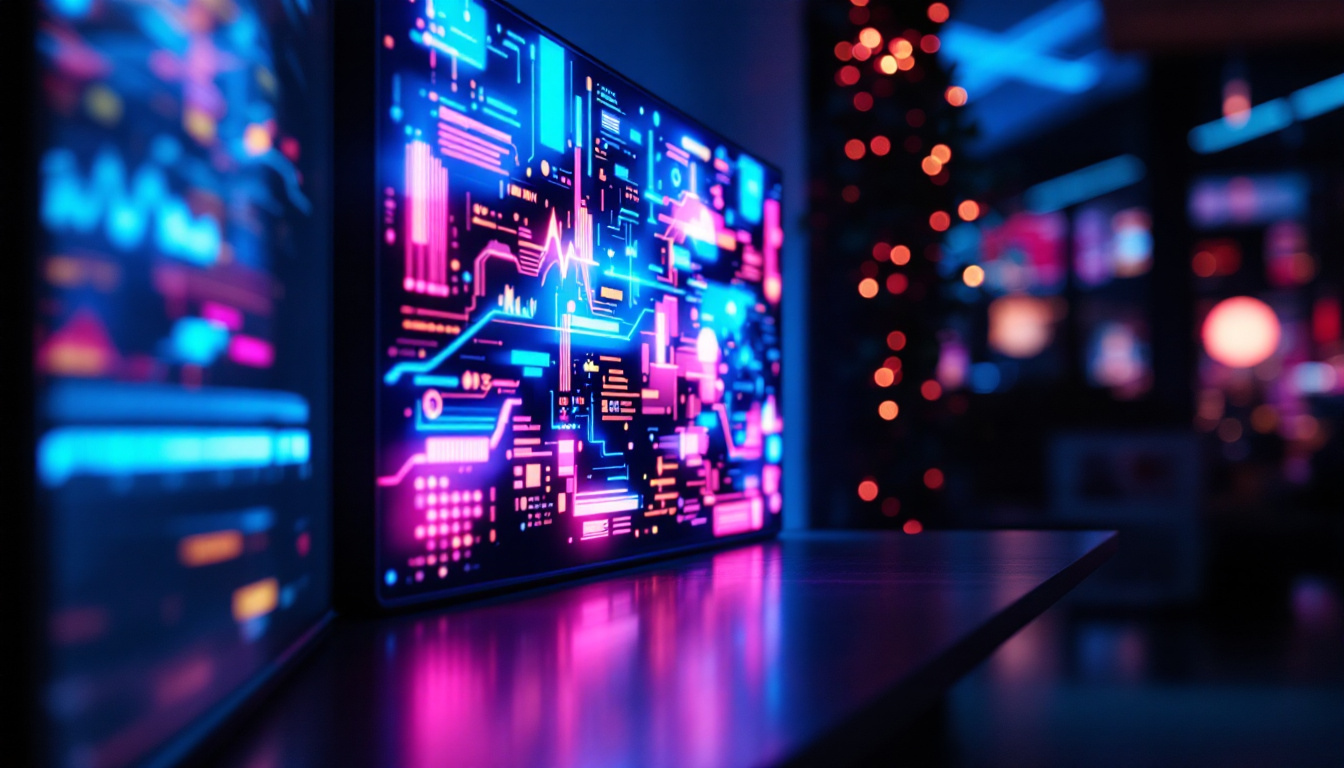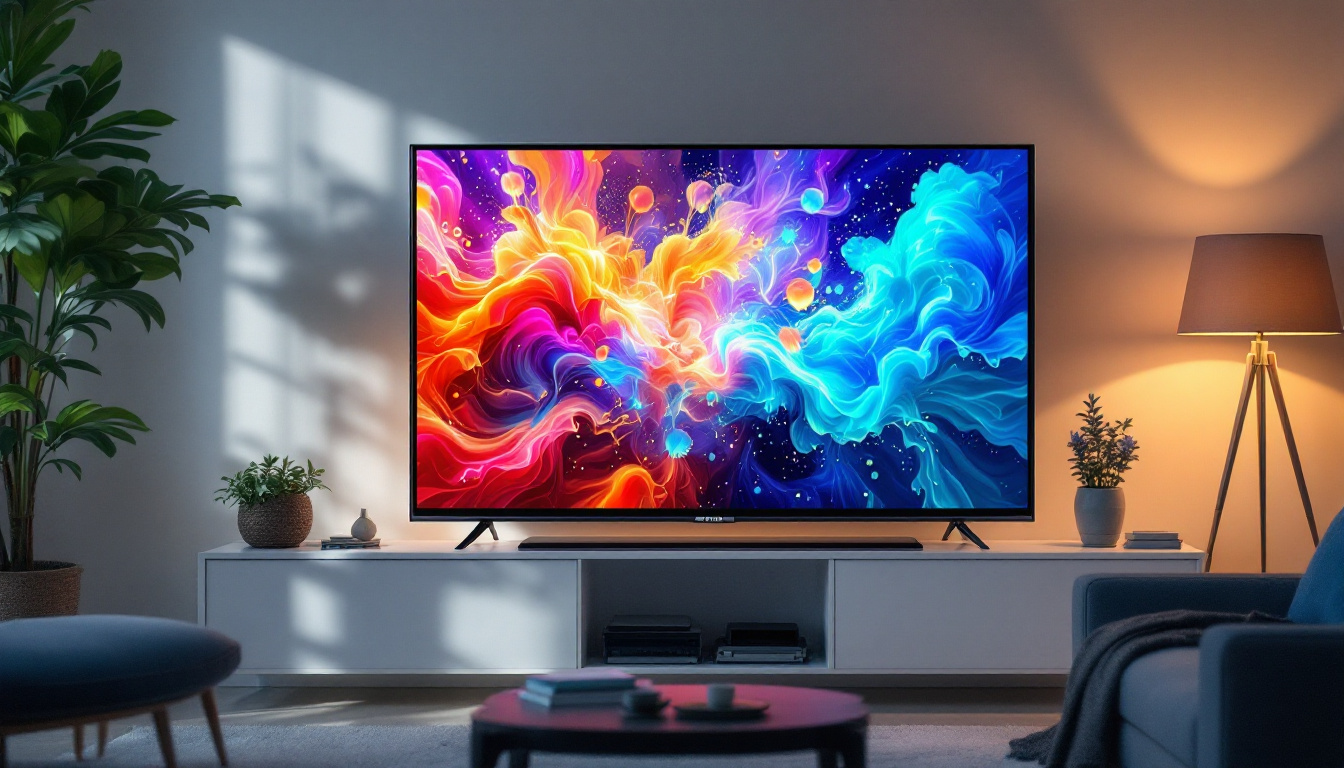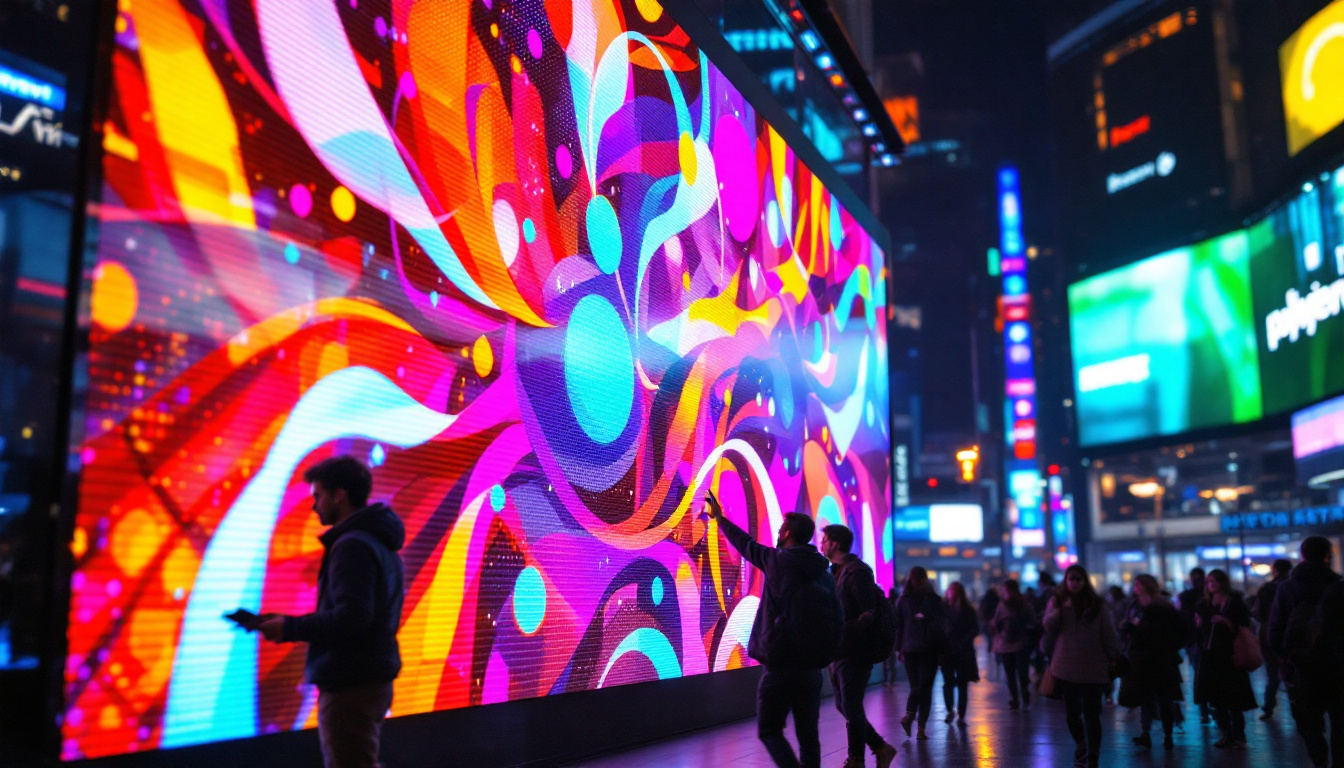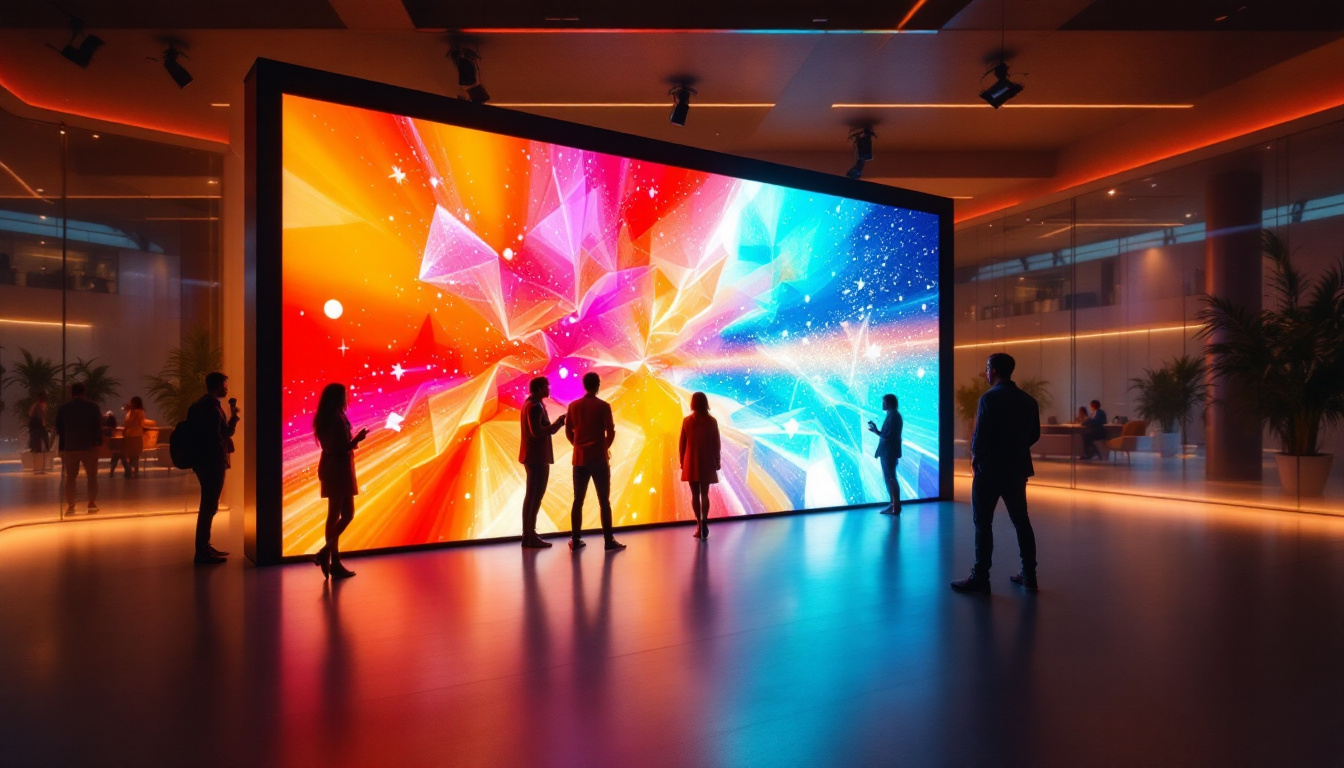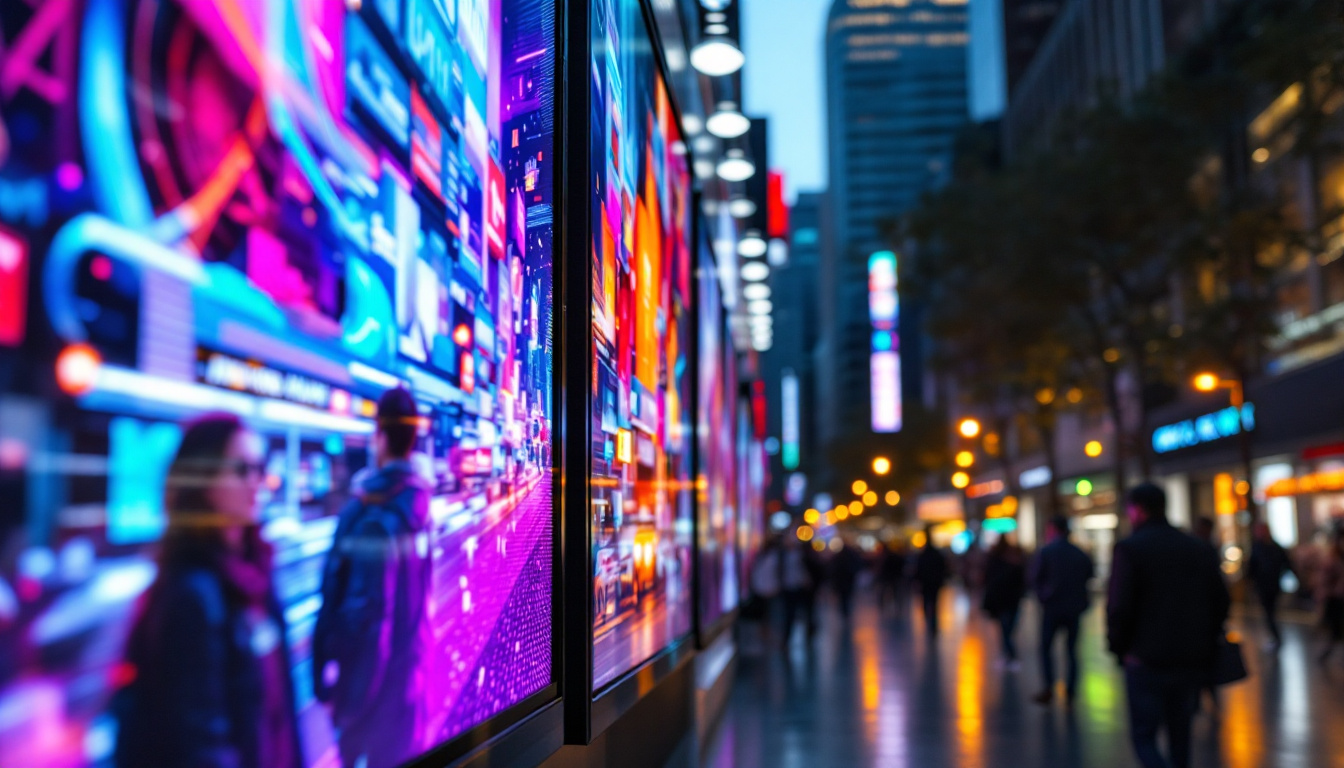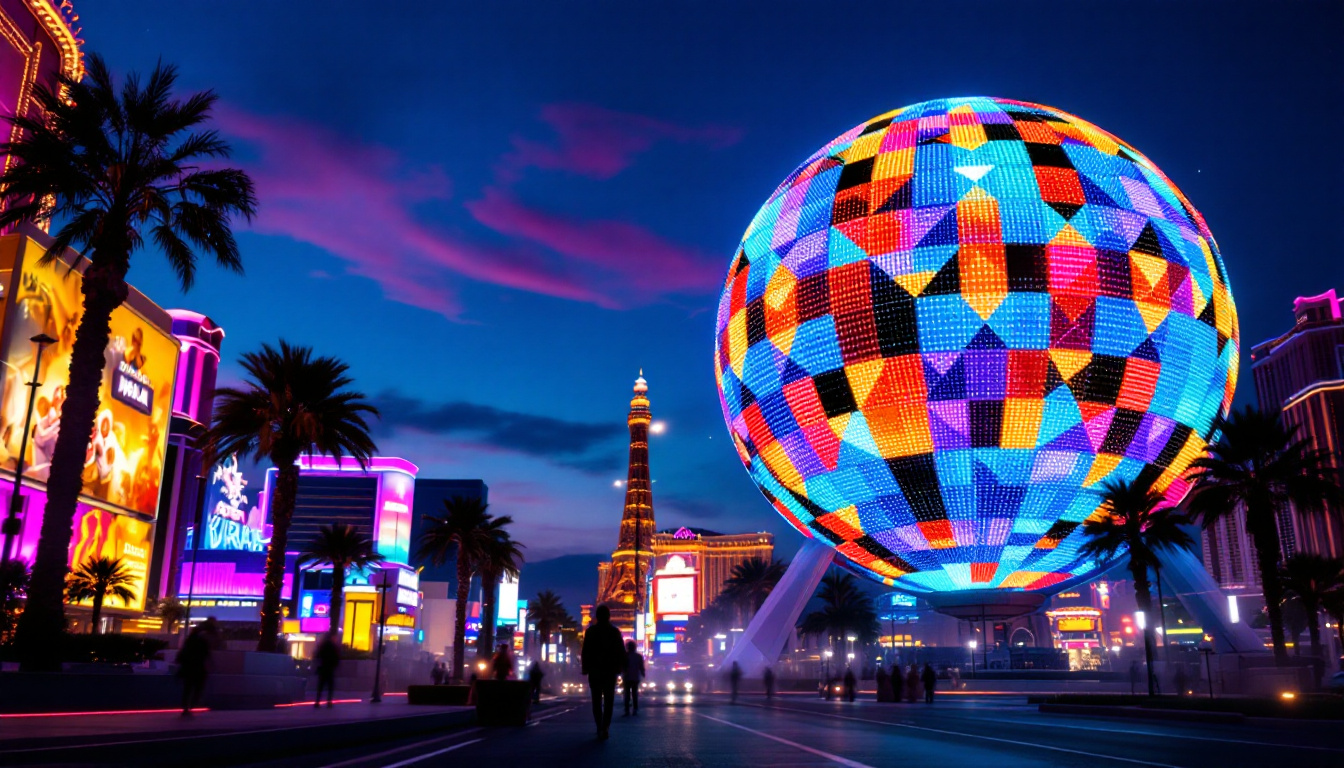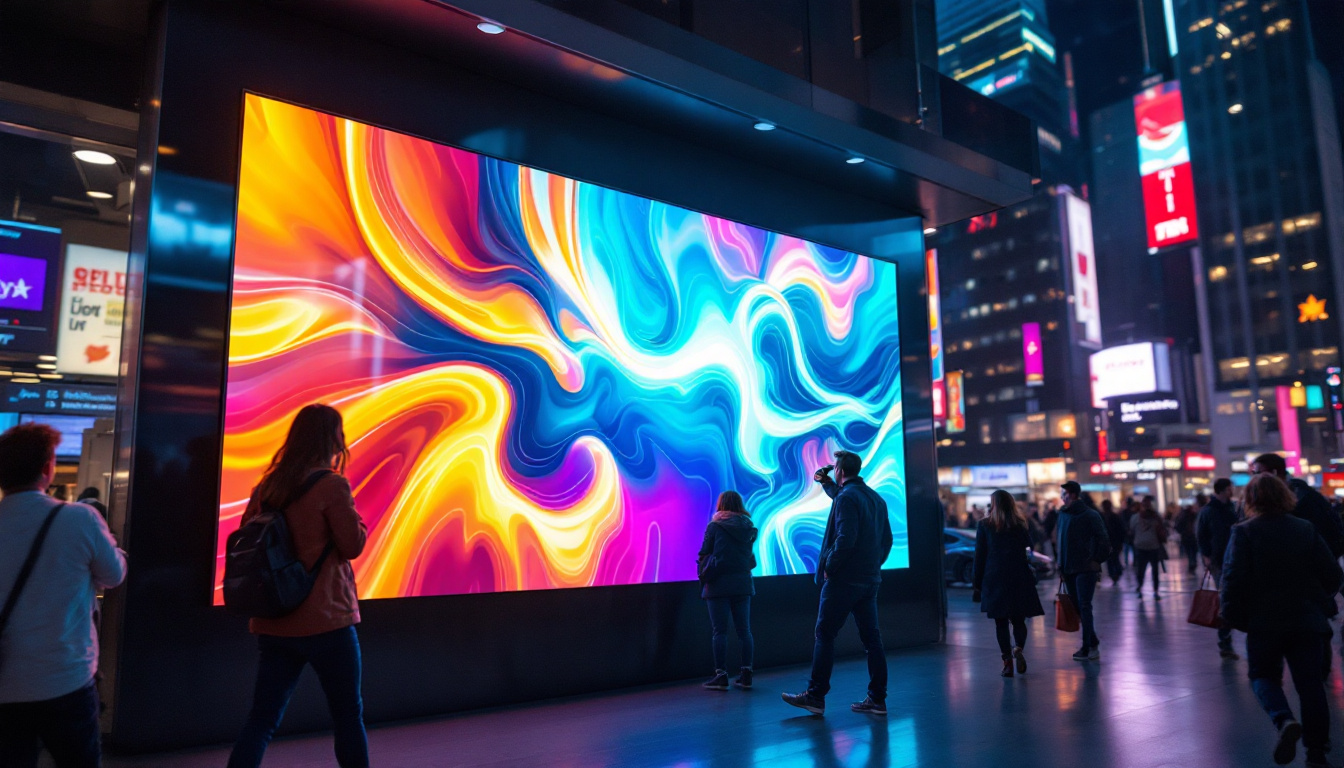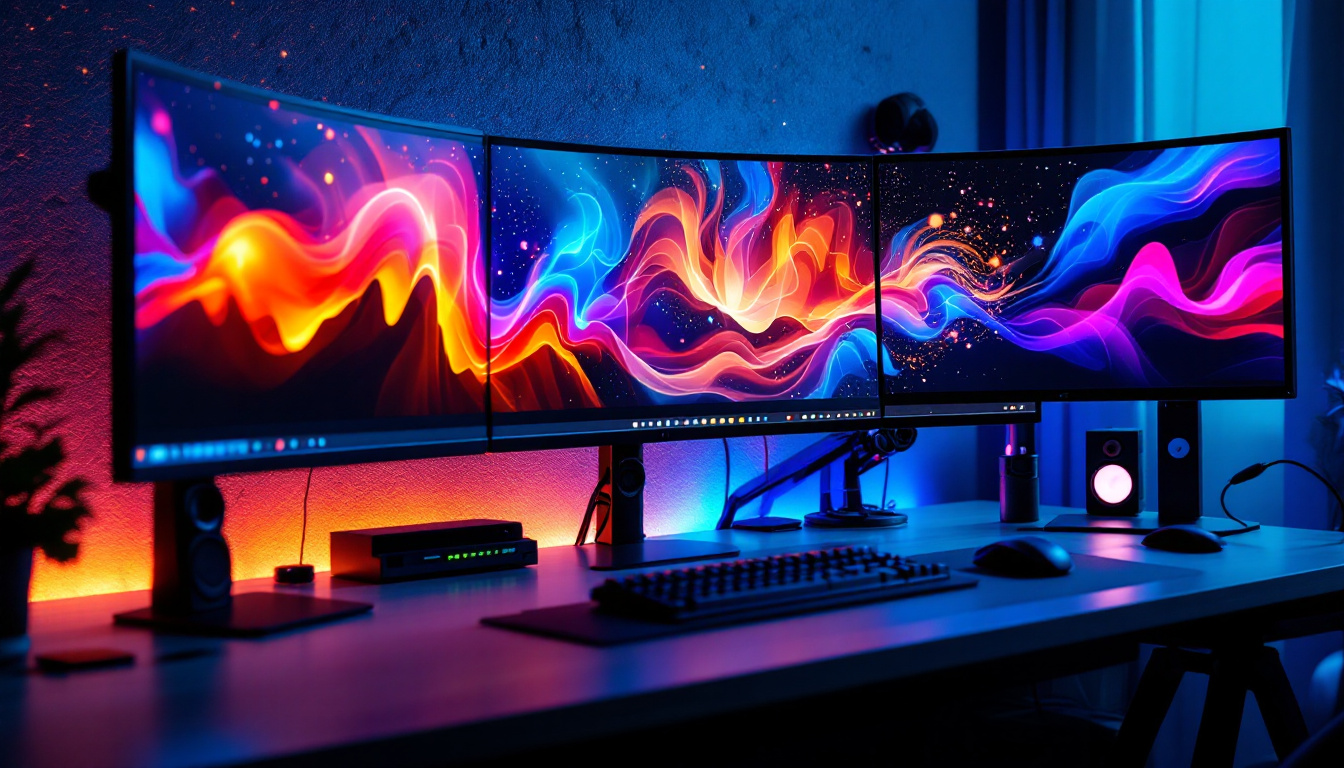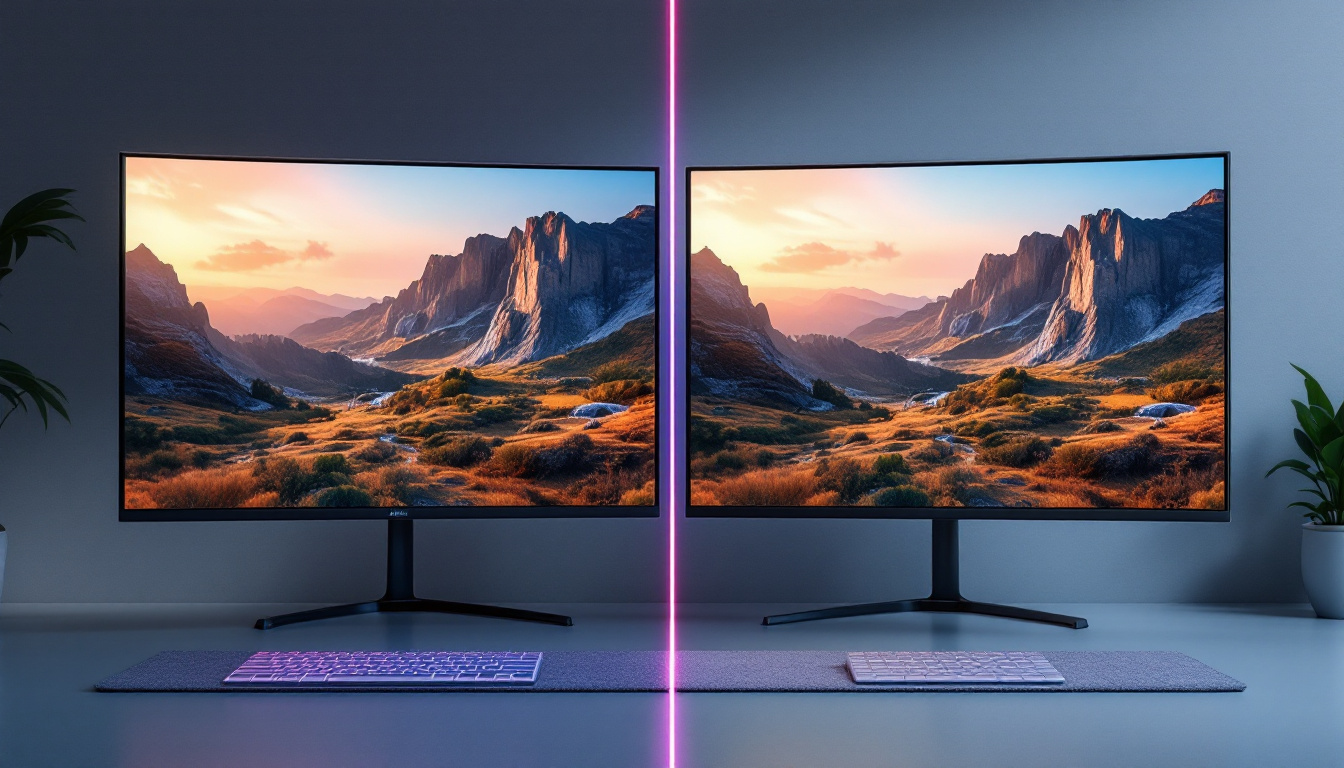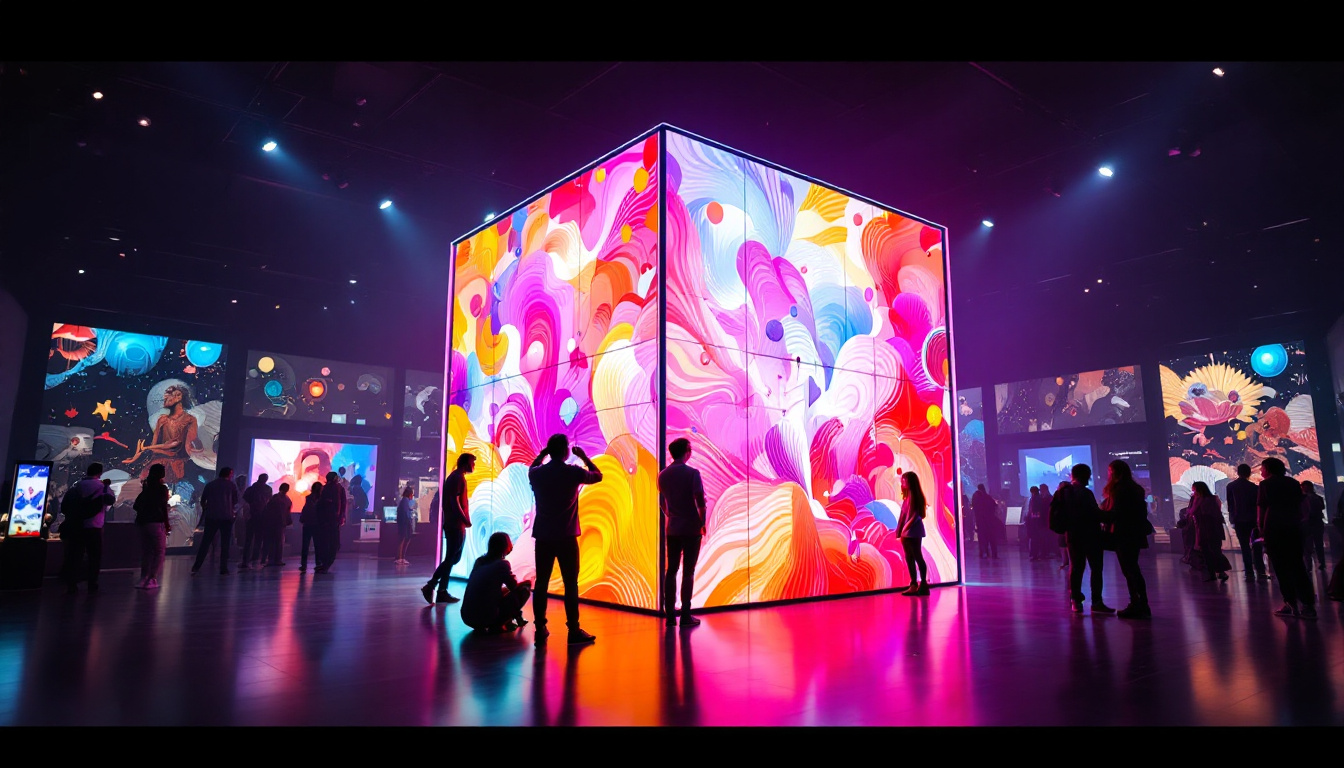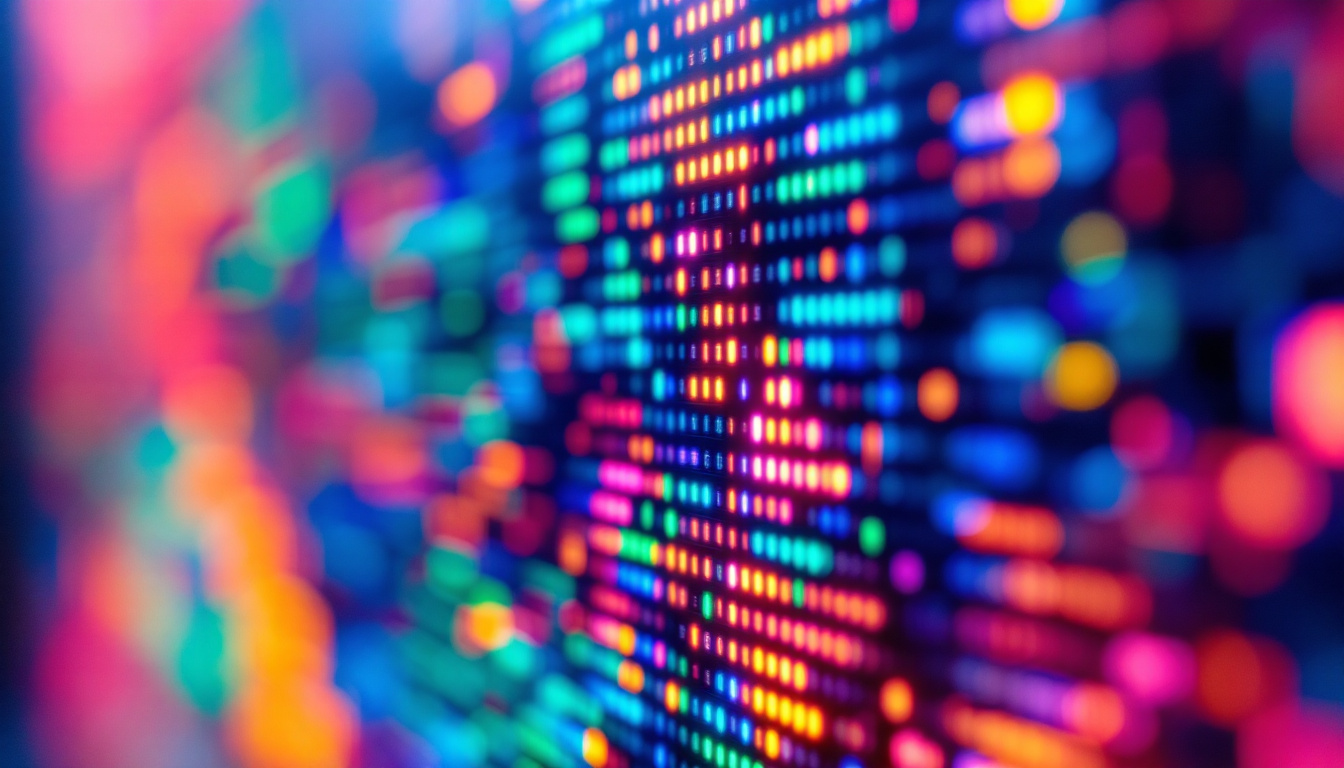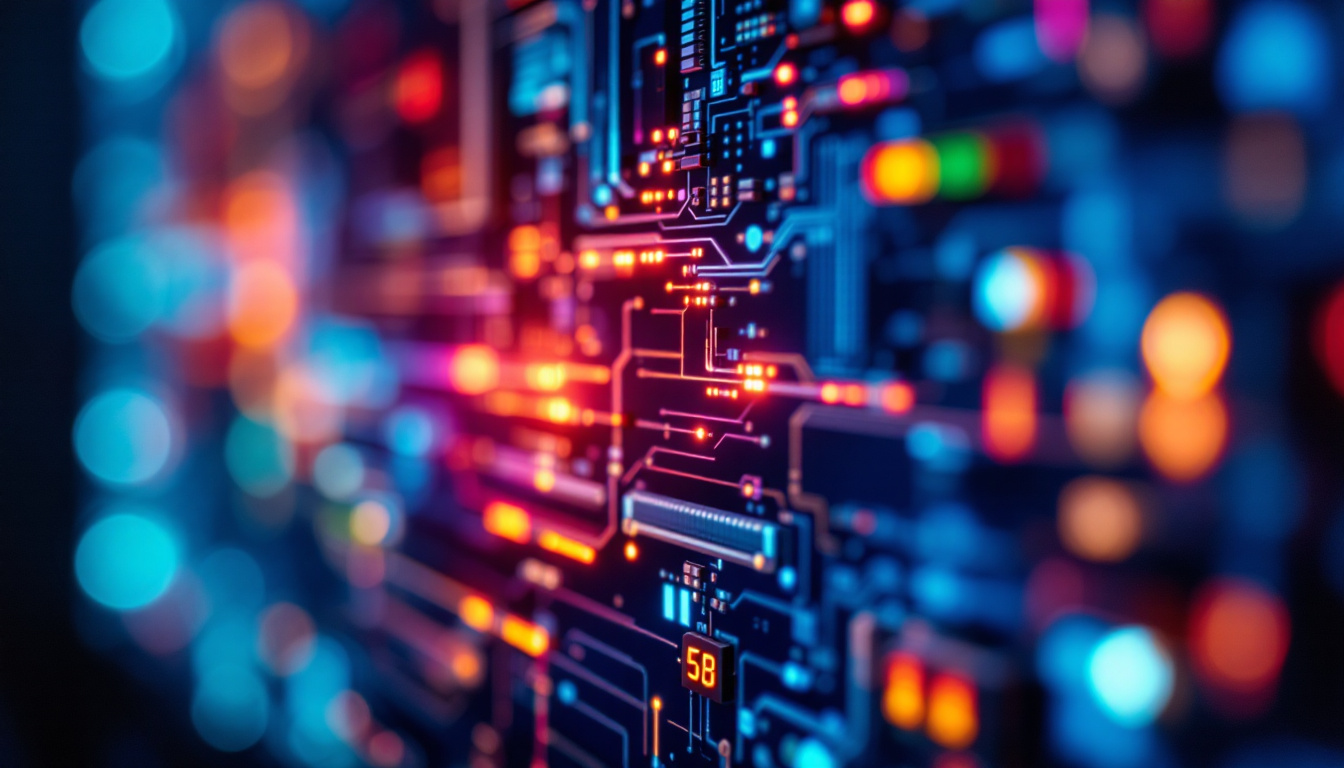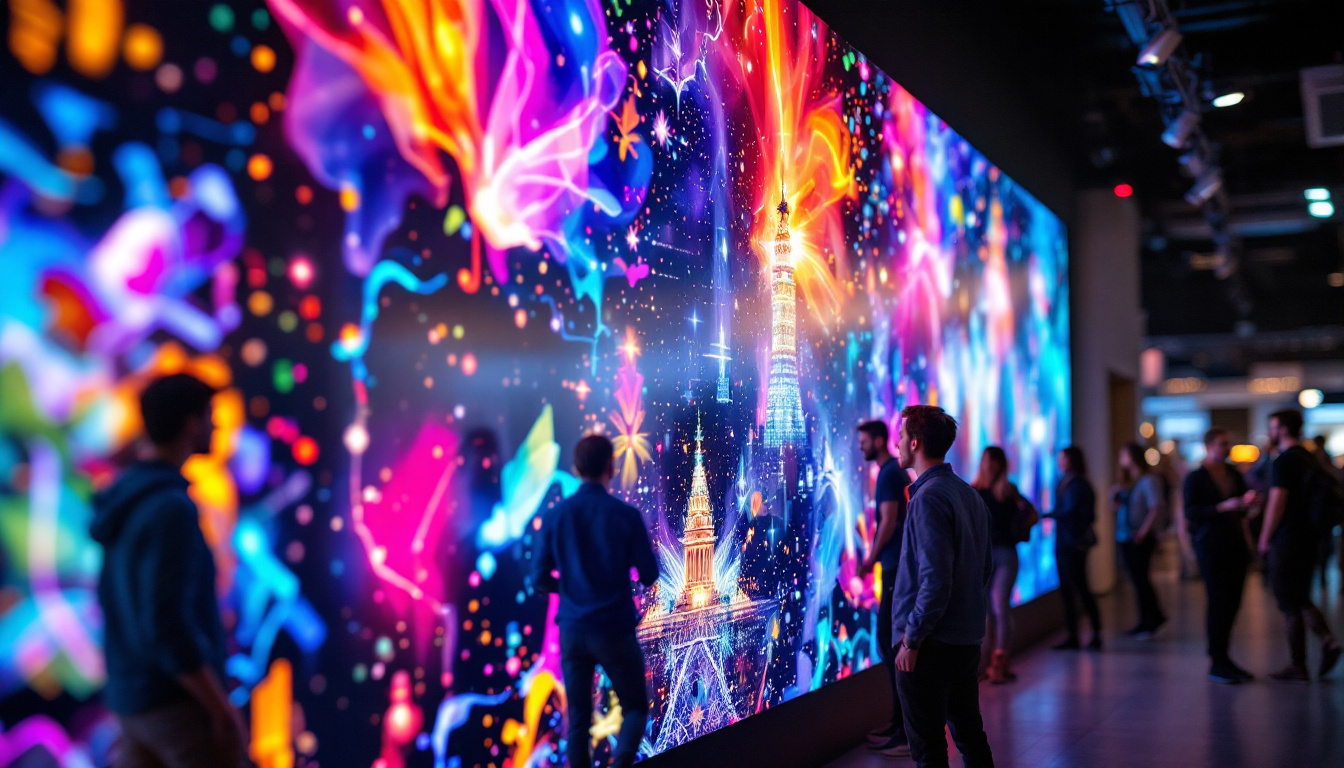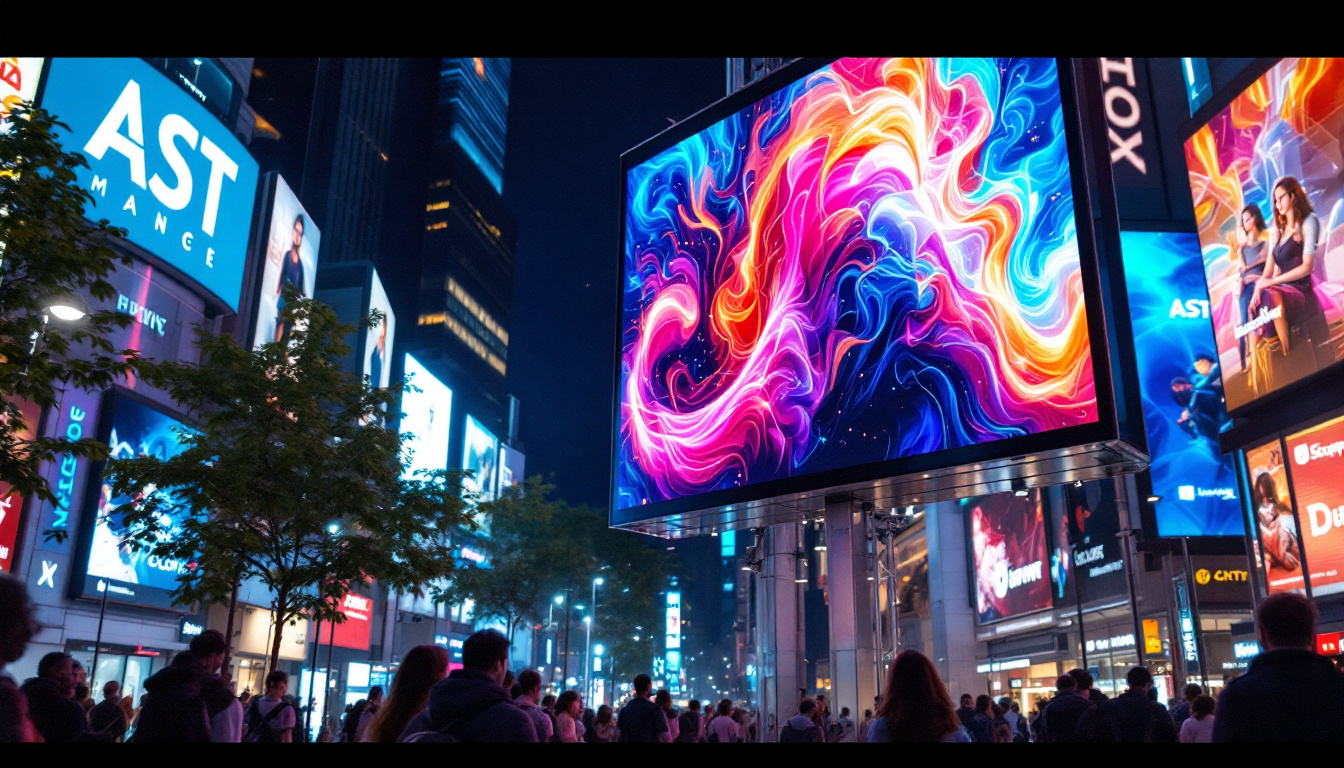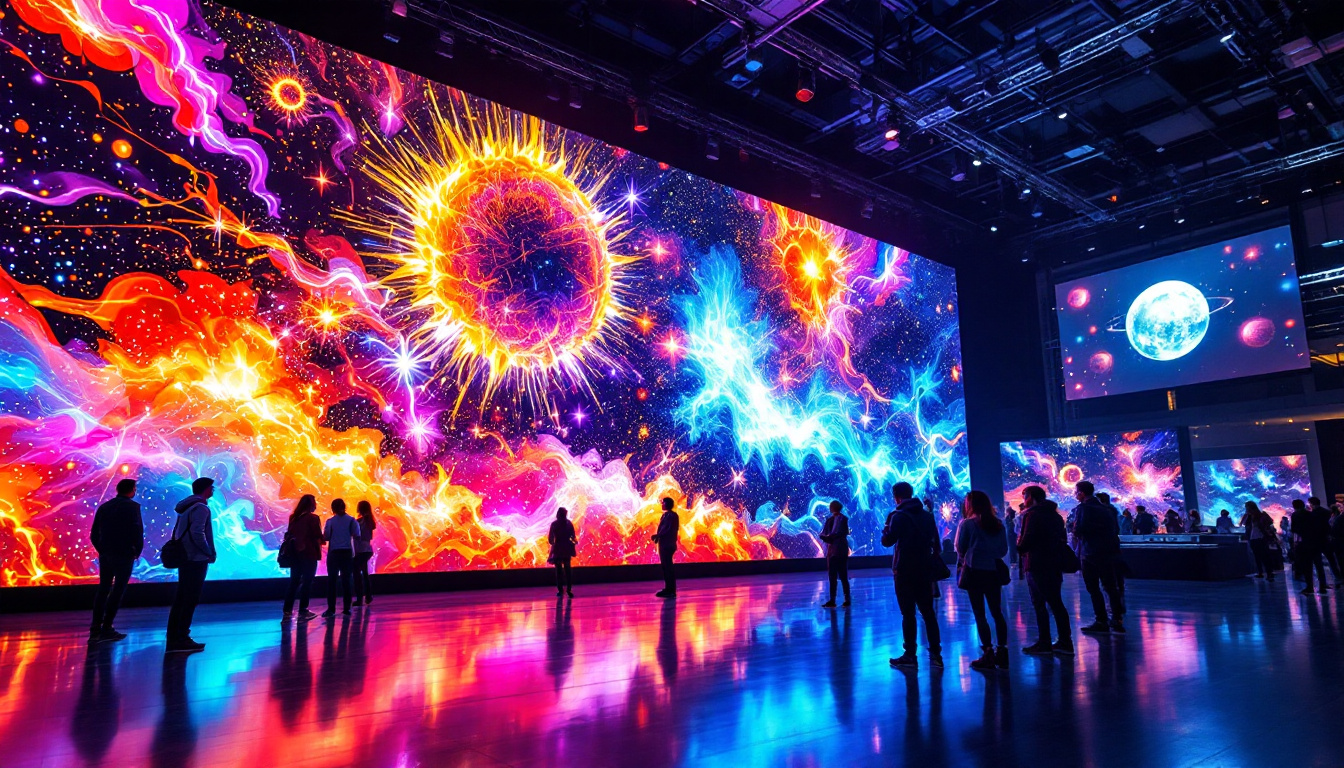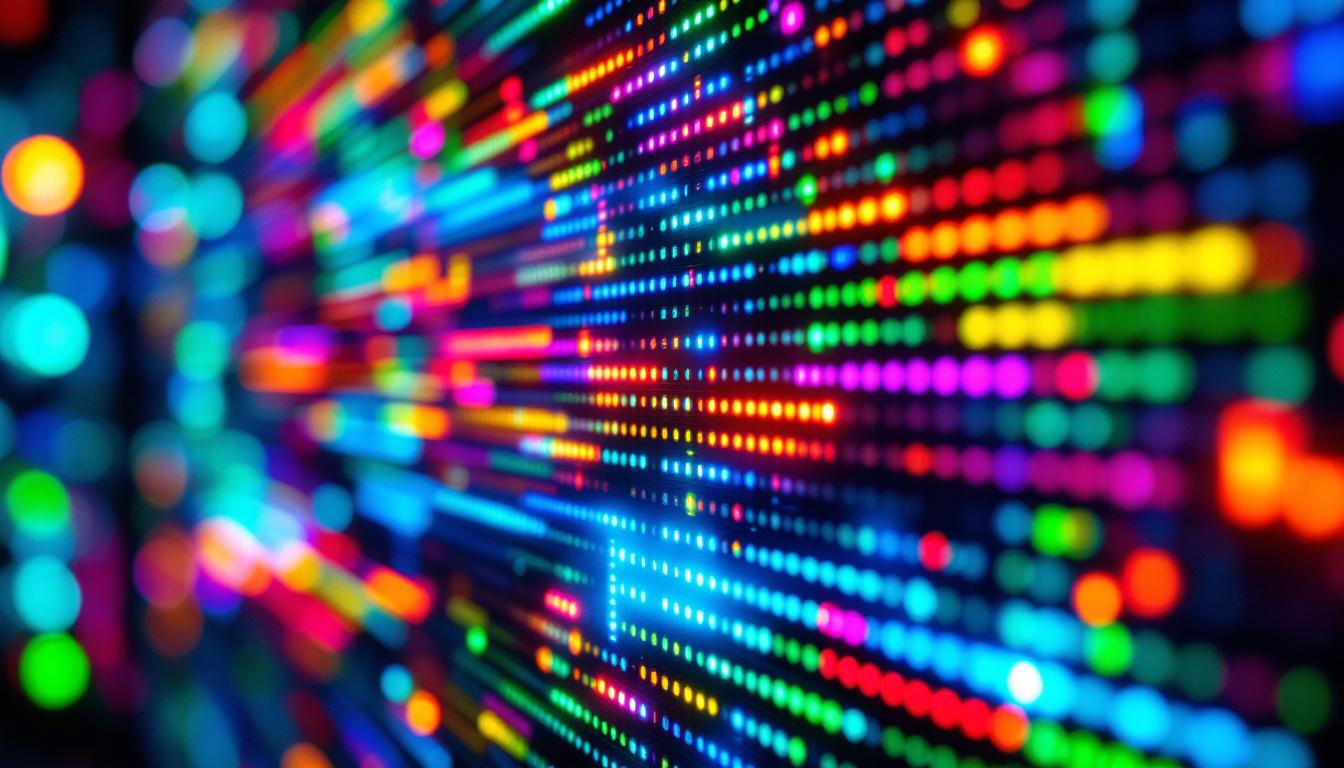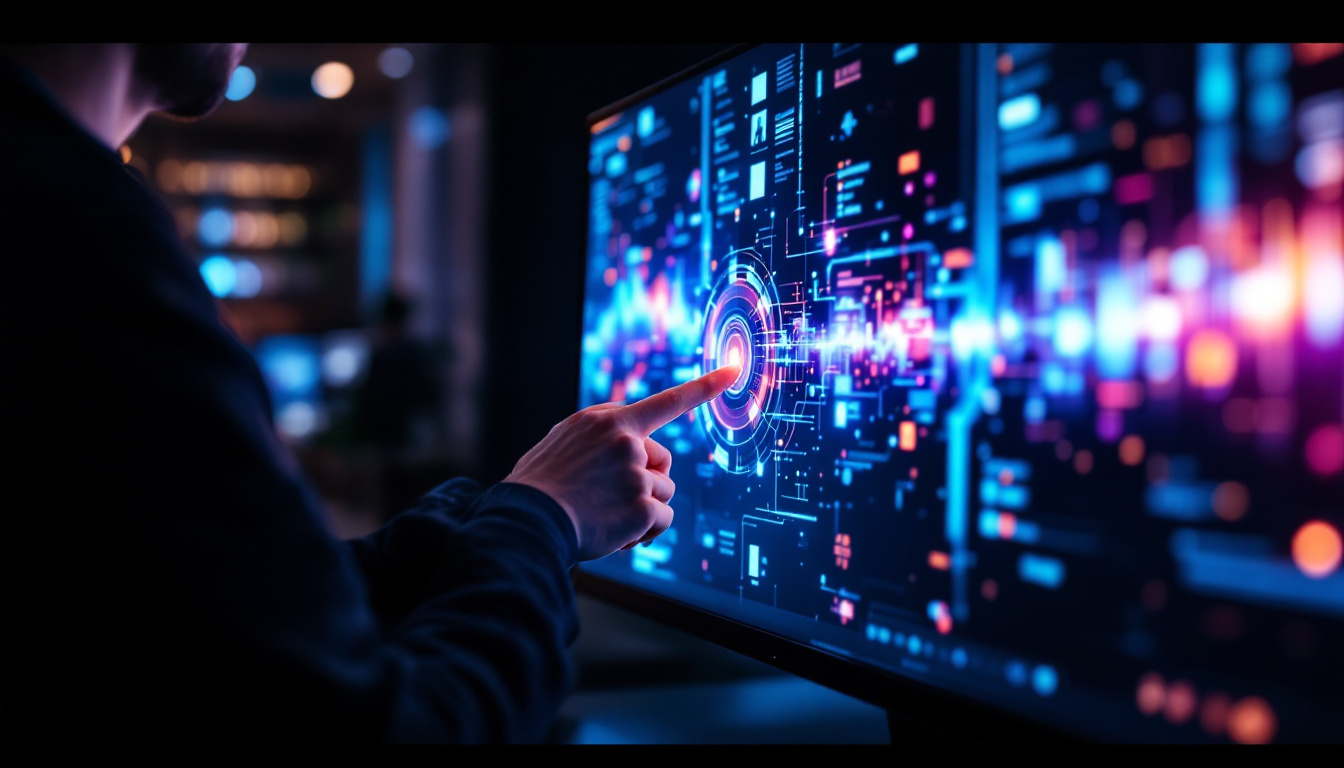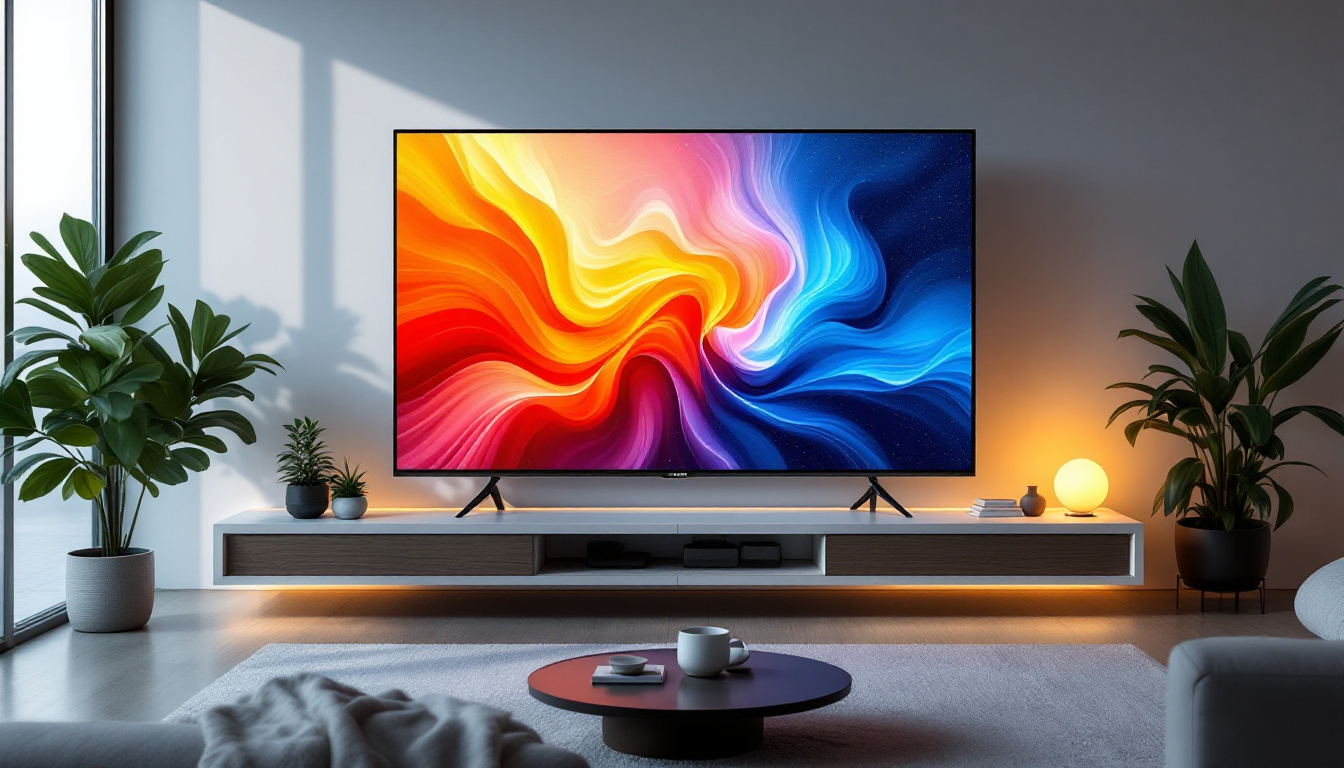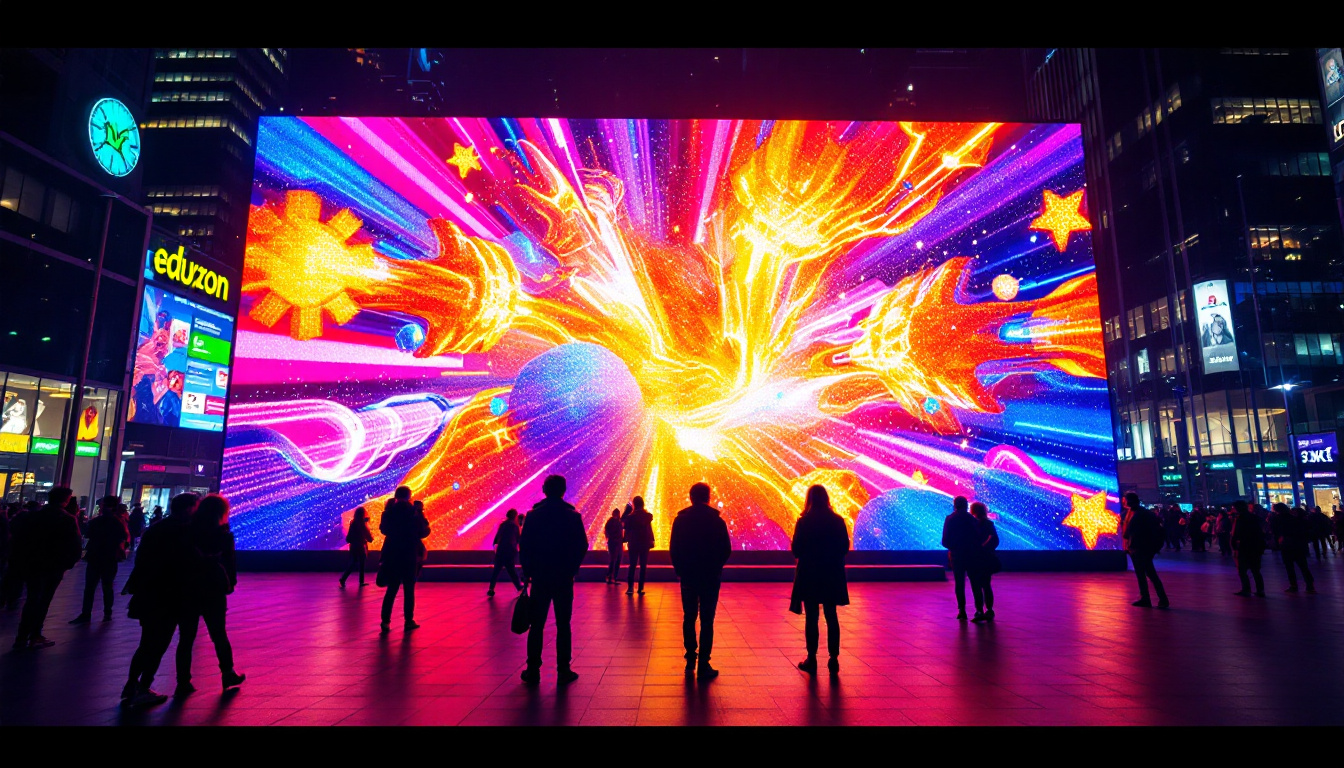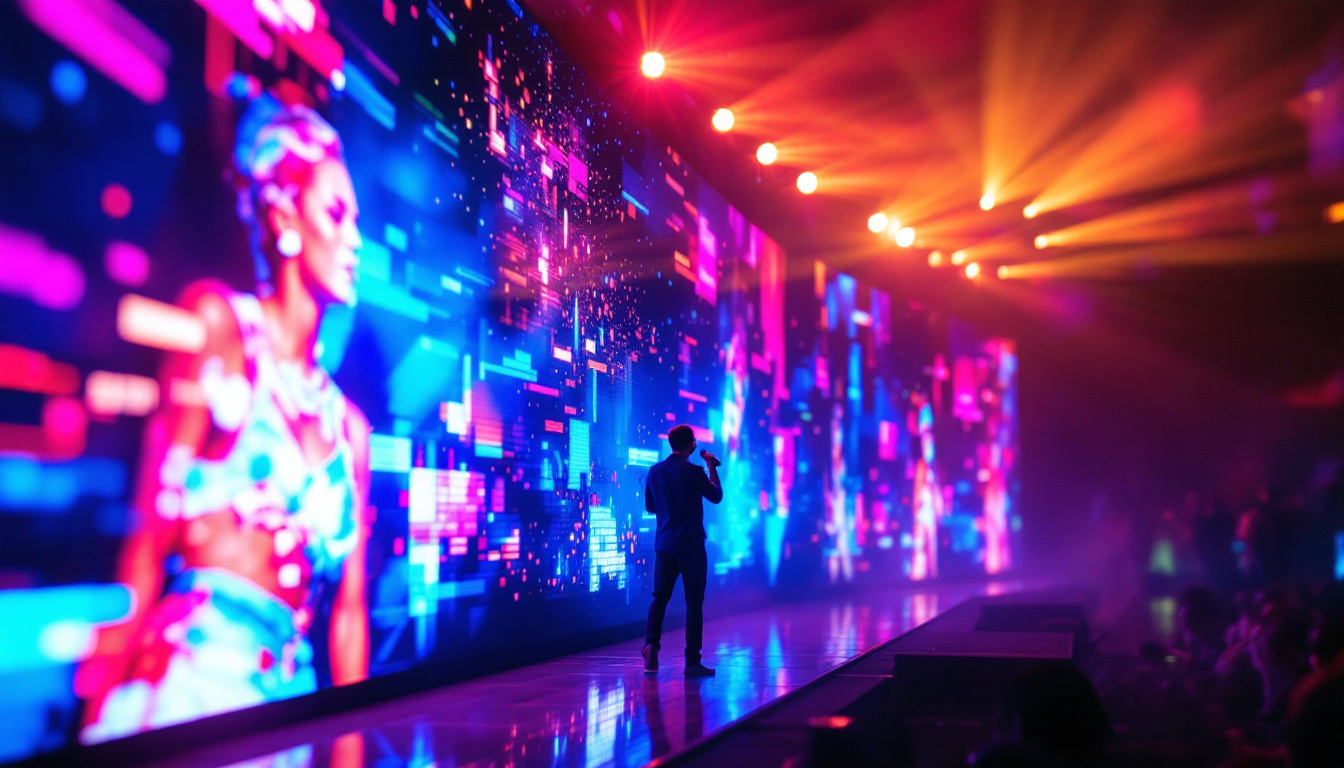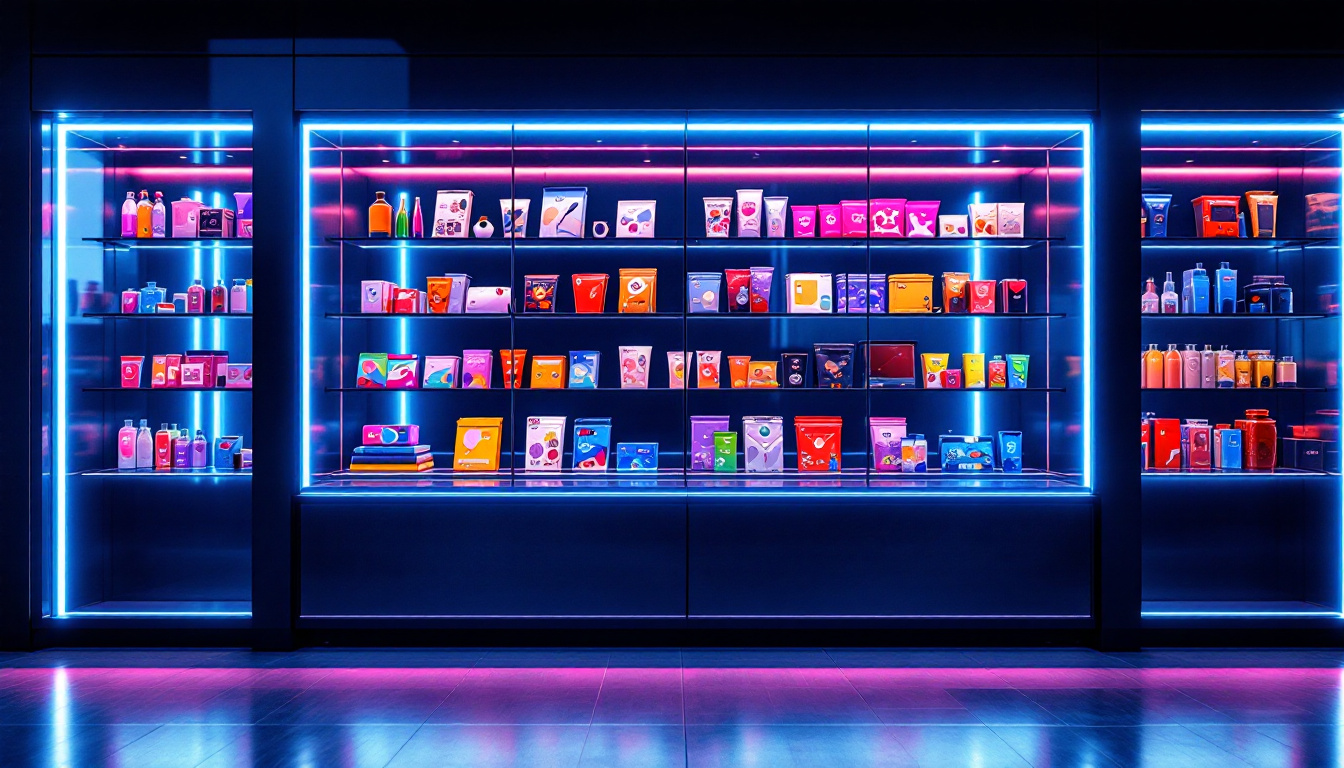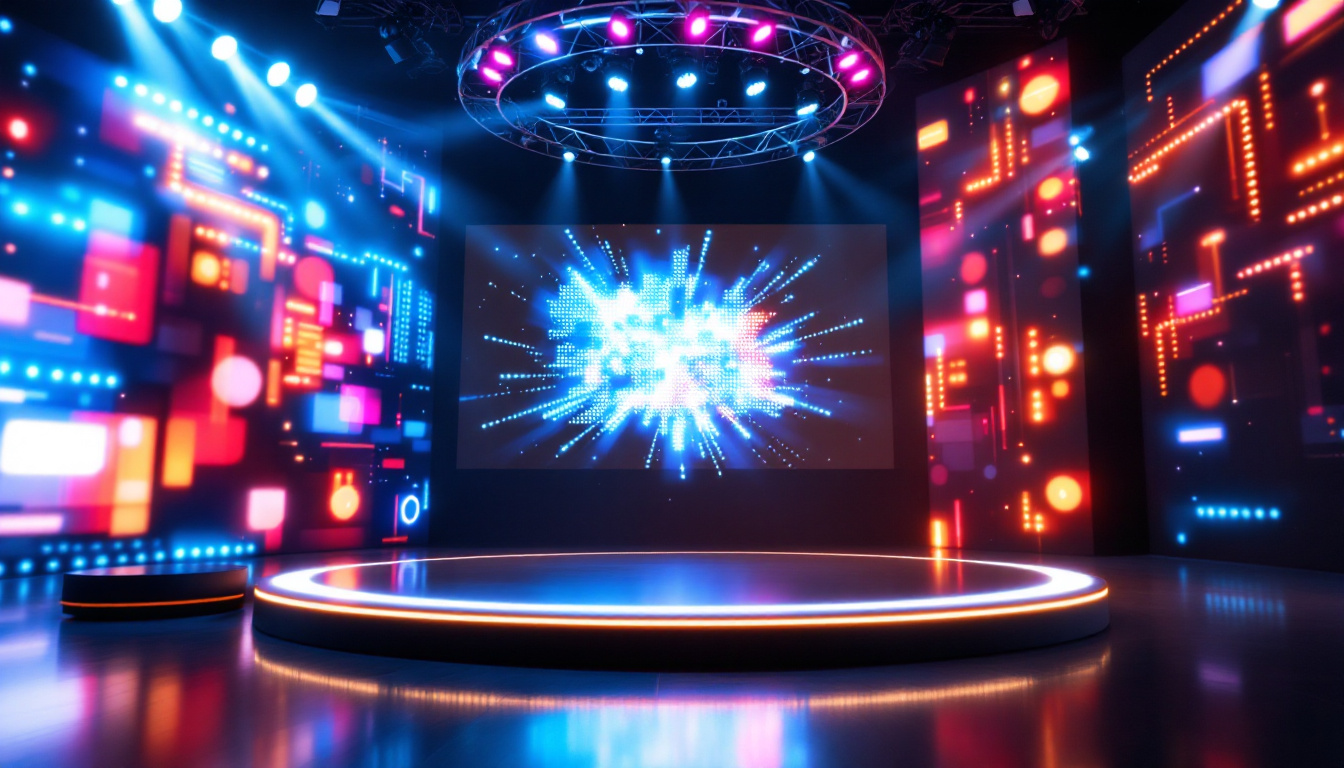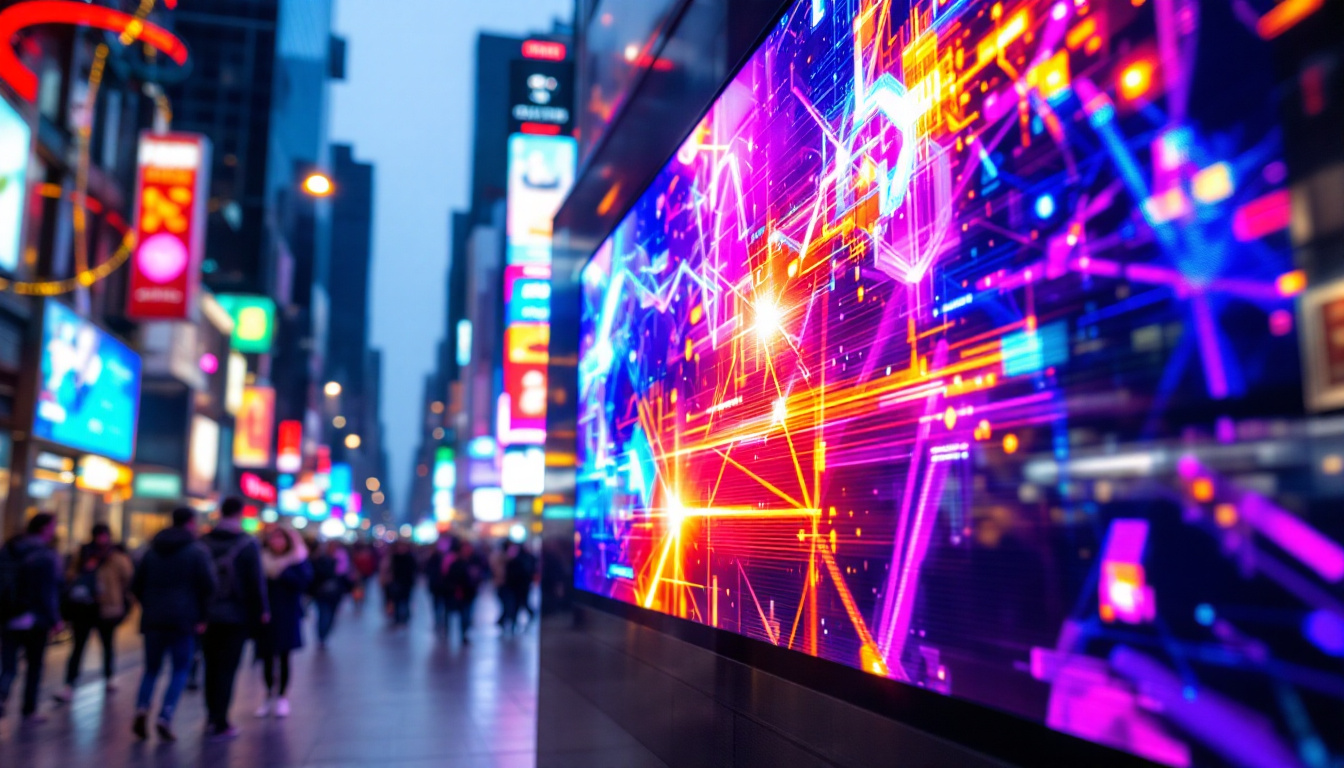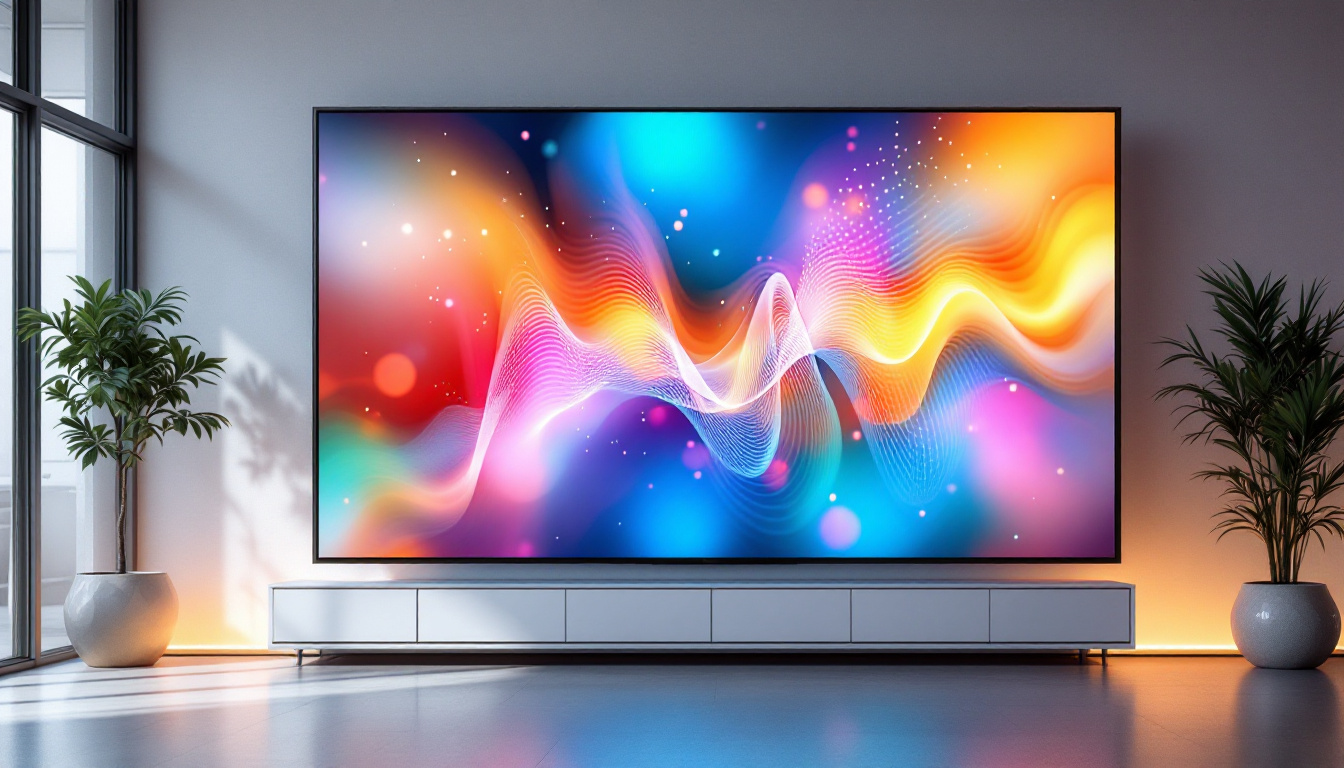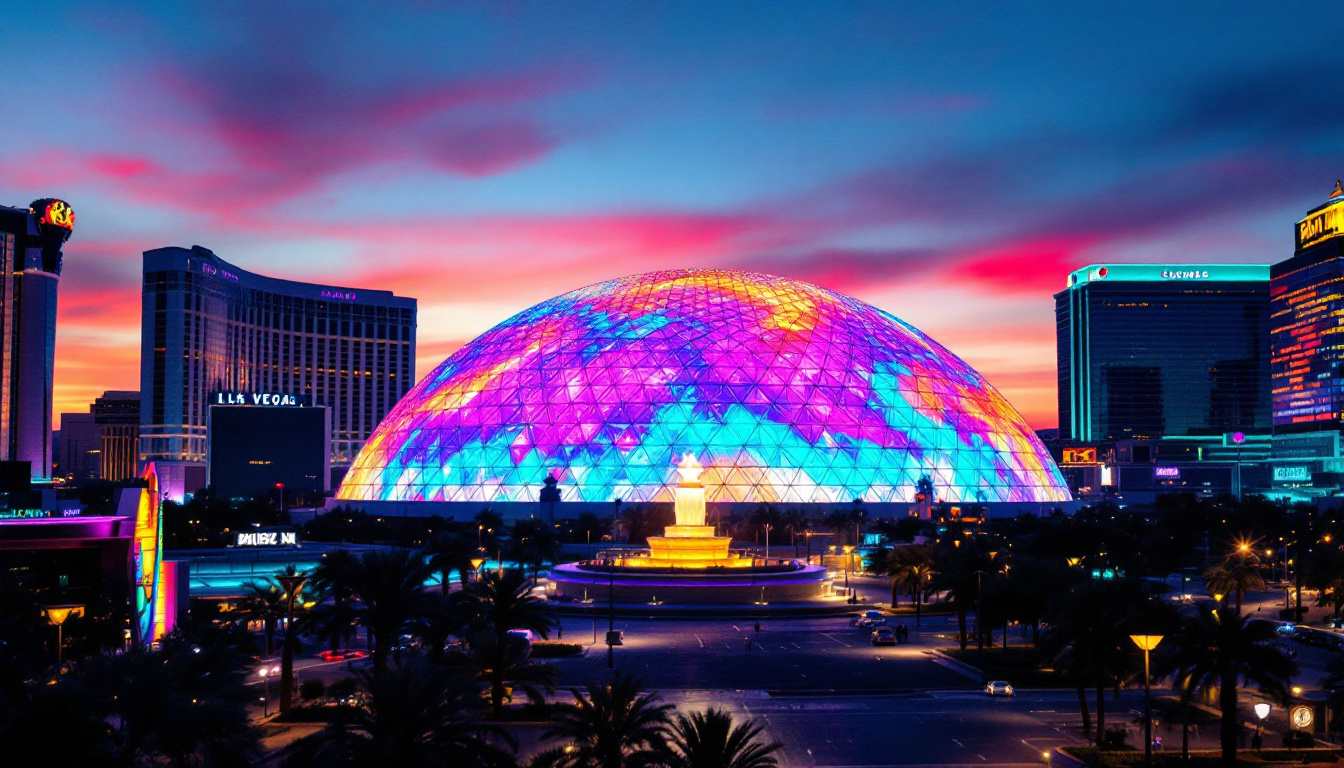In the ever-evolving landscape of display technology, LED panels have emerged as a popular choice for both commercial and residential applications. These illuminated panels, known for their vibrant colors and energy efficiency, have transformed the way information is presented and consumed. This article delves into the intricacies of LED displays, exploring their functionality, advantages, and applications in various fields.
Understanding LED Technology
Light Emitting Diodes (LEDs) are semiconductor devices that emit light when an electric current passes through them. Unlike traditional incandescent bulbs, which produce light through heat, LEDs generate illumination through a process called electroluminescence. This fundamental difference is what makes LED technology so appealing in modern display systems. The efficiency of LEDs not only leads to lower energy consumption but also results in a longer lifespan, often exceeding 25,000 hours compared to the mere 1,000 hours typical of incandescent bulbs. This longevity, coupled with their energy efficiency, has made LEDs the preferred choice for both residential and commercial lighting solutions.
The Basics of LED Operation
At the core of every LED display is a matrix of tiny LED lights arranged in pixels. Each pixel can emit different colors and intensities, allowing for a wide range of visual effects. When combined, these pixels create images and videos that are bright, clear, and engaging. The color of the light emitted depends on the materials used in the semiconductor; for instance, different compounds can produce red, green, or blue light, which can be mixed to create virtually any color. This RGB (Red, Green, Blue) model is fundamental in digital displays, enabling the creation of millions of colors by varying the intensity of each component light. Furthermore, advancements in technology have led to the development of full-spectrum LEDs that can replicate natural sunlight, enhancing the viewing experience in various applications.
LED displays can be categorized into two main types: active and passive matrix displays. Active matrix displays utilize a grid of transistors to control each pixel individually, resulting in sharper images and faster refresh rates. Passive matrix displays, on the other hand, use a simpler grid structure, which can lead to slower response times and less vibrant colors. The choice between these two types often depends on the intended use; for instance, active matrix displays are favored for high-definition video applications, while passive matrix displays may be suitable for simpler, less demanding tasks.
Types of LED Displays
LED displays come in various forms, each designed for specific applications. The most common types include:
- Direct View LED Displays: These are large screens made up of individual LED modules, often used in outdoor advertising and large venues. Their high brightness and visibility in direct sunlight make them ideal for billboards and stadiums.
- LED Backlit Displays: Found in televisions and computer monitors, these displays use LEDs to illuminate an LCD panel from behind, enhancing brightness and contrast. This technology allows for thinner screens and improved energy efficiency, making it a popular choice in consumer electronics.
- Organic LED (OLED) Displays: Utilizing organic compounds, OLEDs offer superior color accuracy and flexibility, making them ideal for high-end televisions and smartphones. The ability of OLEDs to produce true blacks by turning off individual pixels contributes to their exceptional contrast ratios, providing a more immersive viewing experience.
In addition to these common types, there are also specialized LED displays, such as transparent LEDs, which allow for creative advertising solutions in retail environments, and flexible LED displays that can be bent and shaped to fit unique designs. These innovations continue to push the boundaries of what is possible with LED technology, enabling new applications in art, architecture, and interactive installations. As the demand for high-quality visual displays grows, the evolution of LED technology remains at the forefront of the industry, promising even more exciting developments in the future.
Advantages of LED Displays
LED displays offer numerous advantages over traditional display technologies, making them an attractive option for a wide range of applications. Here are some key benefits:
Energy Efficiency
One of the most significant advantages of LED technology is its energy efficiency. LED displays consume considerably less power than their incandescent or fluorescent counterparts. This not only reduces electricity costs but also contributes to lower carbon emissions, making LED displays a more environmentally friendly choice.
Additionally, the longevity of LED lights means that they require less frequent replacements, further reducing waste and maintenance costs. Most LED panels have a lifespan of over 50,000 hours, which translates to years of reliable performance.
Brightness and Visibility
LED displays are renowned for their brightness and visibility, even in direct sunlight. This makes them ideal for outdoor advertising and public displays where visibility is crucial. The ability to produce high levels of brightness without sacrificing color accuracy ensures that images and text remain clear and vibrant in various lighting conditions.
Furthermore, advanced technologies such as high dynamic range (HDR) and local dimming enhance the viewing experience by improving contrast and color depth, making LED displays even more appealing for consumers.
Versatility and Flexibility
LED displays are incredibly versatile and can be adapted for a wide range of applications. From large-scale billboards to small screens in retail environments, the modular nature of LED technology allows for seamless integration into various settings. Additionally, LED panels can be curved or shaped to fit unique spaces, offering creative solutions for designers and architects.
Moreover, advancements in technology have led to the development of flexible LED displays, which can be bent and shaped to create innovative designs that were previously impossible with traditional display technologies.
Applications of LED Displays
The versatility of LED displays has led to their widespread adoption across various industries. Here are some notable applications:
Advertising and Marketing
One of the most prominent uses of LED displays is in advertising and marketing. Billboards, storefront displays, and event signage often utilize bright and dynamic LED panels to capture the attention of passersby. The ability to change content easily and quickly allows businesses to promote special offers, events, or brand messages in real-time.
Additionally, digital signage powered by LED technology can enhance customer engagement by providing interactive experiences. Touchscreen interfaces and motion sensors can create immersive environments that draw customers in and encourage them to interact with the brand.
Entertainment and Events
In the entertainment industry, LED displays play a crucial role in concerts, festivals, and sporting events. Large-scale LED screens are often used as backdrops for performances, providing stunning visuals that enhance the overall experience for attendees. The ability to synchronize video content with live performances creates a captivating atmosphere that leaves a lasting impression.
Moreover, LED displays are commonly used in arenas and stadiums for scoreboards, instant replays, and fan engagement activities, making them an essential component of modern sports entertainment.
Transportation and Public Spaces
LED technology has also found its way into transportation systems and public spaces. Digital signage at airports, train stations, and bus terminals provides real-time information to travelers, enhancing their overall experience. These displays can relay flight schedules, delays, and other important announcements, ensuring that passengers stay informed.
In urban environments, LED displays are increasingly used for public art installations and information boards, contributing to the aesthetic appeal of cities while serving practical purposes.
Challenges and Considerations
While LED displays offer numerous benefits, there are also challenges and considerations to keep in mind when implementing this technology.
Initial Costs
The initial investment for LED displays can be higher than traditional display technologies. Although the long-term savings in energy and maintenance costs can offset this expense, businesses and organizations must weigh the upfront costs against their budget and expected return on investment.
However, as technology advances and production processes become more efficient, the prices of LED displays have been steadily decreasing, making them more accessible to a wider range of consumers.
Heat Management
LED displays generate heat during operation, which can affect performance and longevity if not properly managed. Adequate heat dissipation mechanisms, such as cooling fans or heat sinks, must be integrated into the design to ensure optimal performance and prevent overheating.
Proper installation and maintenance are essential to mitigate these issues and ensure that LED displays operate efficiently over their lifespan.
The Future of LED Displays
The future of LED displays looks promising, with ongoing advancements in technology and design. Innovations such as microLED and miniLED technologies are paving the way for even higher resolutions and improved color accuracy. These developments are expected to revolutionize the display industry, offering consumers an unparalleled viewing experience.
MicroLED Technology
MicroLED technology involves the use of tiny individual LEDs to create images at a pixel level. This approach allows for incredibly high resolutions and brightness levels, making it ideal for applications requiring exceptional image quality. MicroLED displays are also more energy-efficient than traditional LED displays, further enhancing their appeal.
As this technology matures, it is expected to find applications in everything from large-scale displays to consumer electronics, such as televisions and smartphones.
Integration with Smart Technology
As smart technology continues to permeate everyday life, the integration of LED displays with IoT (Internet of Things) devices is becoming increasingly common. Smart LED displays can be connected to the internet, allowing for remote content management, real-time updates, and interactive features.
This connectivity opens up new possibilities for businesses, enabling them to tailor their messaging and engage with customers in innovative ways. The potential for data-driven advertising and personalized content delivery is vast, making LED displays a key component of the future of marketing.
Conclusion
Illuminated panels and LED displays have fundamentally changed the way information is presented and consumed in various industries. With their energy efficiency, vibrant colors, and versatility, LED technology continues to be a driving force in display innovation. As advancements in technology pave the way for new applications and improved performance, the future of LED displays looks bright.
Whether for advertising, entertainment, or public information, LED displays are poised to play an increasingly vital role in shaping the visual landscape of our world. Their ability to capture attention and convey messages effectively makes them an invaluable tool for businesses and organizations seeking to engage their audiences.
Discover LumenMatrix’s Innovative LED Solutions
Ready to elevate your visual impact? Explore how LumenMatrix’s cutting-edge LED display modules can transform your space and captivate your audience. From vibrant Indoor and Outdoor LED Wall Displays to dynamic Vehicle and Sports LED Displays, our comprehensive range of solutions is designed to meet your unique needs. Experience the future of visual communication with our Custom, All-in-One, and Transparent LED Displays, all crafted to deliver unparalleled clarity and engagement. Don’t miss the opportunity to revolutionize your brand’s visibility. Check out LumenMatrix LED Display Solutions today and see your message come to life like never before.

